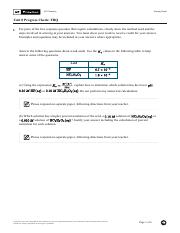Conquering AP Stats Unit 8: Inference for Categorical Data

So, you've arrived at the statistical showdown that is AP Statistics Unit 8. This unit, focusing on inference for categorical data, can feel like navigating a wild west of chi-squared tests and proportions. But fear not, intrepid learner! With the right tools and strategies, you can wrangle these concepts and ride off into the sunset of statistical success.
Unit 8 builds upon the foundational knowledge of earlier units, introducing powerful methods to analyze categorical variables. Think about data that falls into categories, like eye color, favorite movie genre, or voting preference. This unit equips you to make inferences about populations based on sample data from these categories.
The College Board introduced this unit as part of the AP Statistics curriculum to provide students with a comprehensive understanding of statistical inference. Before this dedicated unit, inference for categorical data might have been scattered throughout the course. Now, it's a focused exploration of vital concepts used across various fields from medicine to marketing.
One of the central challenges students face in Unit 8 is distinguishing between the different types of chi-squared tests and choosing the appropriate one for a given scenario. Understanding when to use a chi-squared test for goodness of fit, independence, or homogeneity is crucial. Another common struggle involves checking conditions for inference, particularly ensuring that expected cell counts are sufficiently large.
This unit revolves around chi-squared tests and inference for proportions. The chi-squared test for goodness of fit determines if a sample distribution matches a hypothesized distribution. The chi-squared test for independence explores whether two categorical variables are associated. The chi-squared test for homogeneity examines if multiple populations have the same distribution for a categorical variable. Inference for proportions involves constructing confidence intervals and conducting hypothesis tests for one or two population proportions.
Mastering Unit 8 offers several benefits. First, it provides a deep understanding of how to analyze categorical data, a common type of data encountered in research and real-world applications. For example, a researcher might use a chi-squared test to investigate the relationship between smoking and lung cancer. Second, it strengthens your ability to draw meaningful conclusions from data, a crucial skill in today's data-driven world. Finally, success in this unit significantly contributes to your overall AP Statistics exam score.
To conquer Unit 8, start by reviewing the core concepts of hypothesis testing and confidence intervals. Then, focus on understanding the different types of chi-squared tests and when to apply each one. Practice problems are key; work through various examples and check your understanding using the AP Statistics Course and Exam Description. Online resources and review books can also provide valuable support.
Advantages and Disadvantages of Focusing Heavily on Unit 8
| Advantages | Disadvantages |
|---|---|
| Deep understanding of categorical data analysis | Can overshadow other important AP Statistics topics |
| Improved ability to draw conclusions from data | May lead to neglecting foundational concepts |
| Boosts AP exam score | Potential for overemphasis on one specific area |
Frequently Asked Questions:
1. What is a chi-squared test? A statistical test used to analyze categorical data.
2. What are the different types of chi-squared tests? Goodness of fit, independence, and homogeneity.
3. How do I choose the right chi-squared test? Based on the research question and data structure.
4. What are the conditions for inference for categorical data? Random sample, large enough expected counts, etc.
5. How do I calculate a chi-squared statistic? Using a specific formula based on observed and expected counts.
6. What is a p-value? The probability of observing the data or more extreme results if the null hypothesis is true.
7. How do I interpret a p-value in the context of a chi-squared test? If the p-value is less than the significance level, reject the null hypothesis.
8. How do I calculate a confidence interval for a proportion? Using a specific formula based on the sample proportion and standard error.
One helpful tip is to create flashcards for each type of chi-squared test, outlining the purpose, conditions, and formula. This can help you quickly identify the correct test to use in different scenarios.
In conclusion, AP Statistics Unit 8, focusing on inference for categorical data, presents both challenges and opportunities. By understanding the different chi-squared tests, practicing problem-solving, and leveraging available resources, you can gain a powerful set of tools for analyzing categorical variables. This mastery will not only enhance your performance on the AP exam but also equip you with valuable skills for interpreting and drawing conclusions from data in various real-world contexts. Don't be intimidated by the complexities of Unit 8. Embrace the challenge, and you'll be well on your way to statistical success. Now, go forth and conquer the world of categorical data analysis!
Mastering the art of smiley faces on your pc keyboard
Decoding va disability payments when do they arrive
Unlocking the potential of ea fc 24 real madrid











